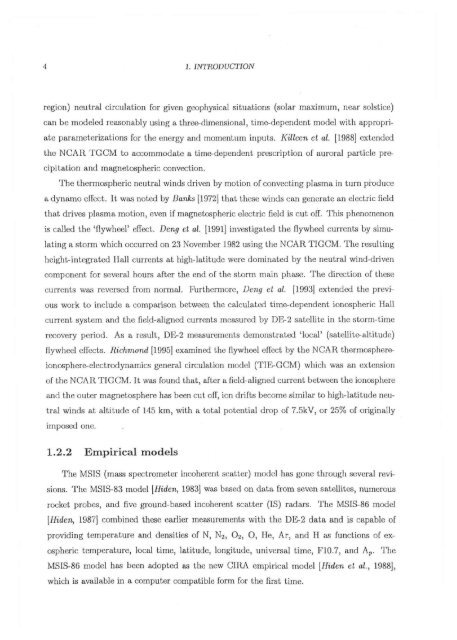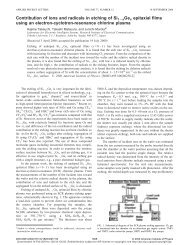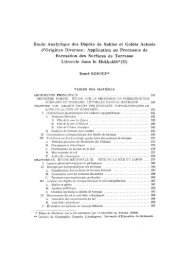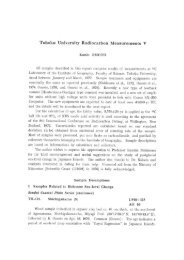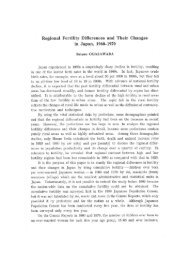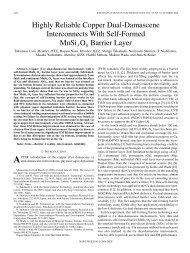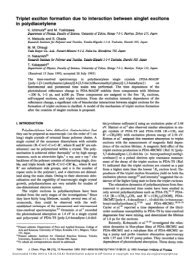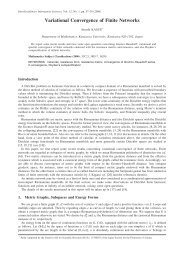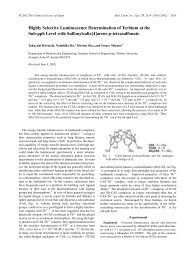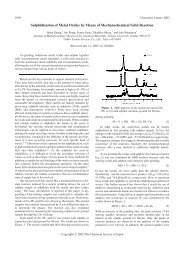MgE71241:1attf:3(t At-- 0 -3 5t5M I:. N1144±TitoD riziMinliJ VAT .9f 1 ...
MgE71241:1attf:3(t At-- 0 -3 5t5M I:. N1144±TitoD riziMinliJ VAT .9f 1 ...
MgE71241:1attf:3(t At-- 0 -3 5t5M I:. N1144±TitoD riziMinliJ VAT .9f 1 ...
Create successful ePaper yourself
Turn your PDF publications into a flip-book with our unique Google optimized e-Paper software.
4 1. INTRODUCTION<br />
region) neutral circulation for given geophysical situations (solar maximum, near solstice)<br />
can be modeled reasonably using a three-dimensional, time-dependent model with appropri-<br />
ate parameterizations for the energy and momentum inputs. Killeen et al. [19881 extended<br />
the NCAR TGCM to accommodate a time-dependent prescription of auroral particle pre-<br />
cipitation and magnetospheric convection.<br />
The thermospheric neutral winds driven by motion of convecting plasma in turn produce<br />
a dynamo effect. It was noted by Banks [1972] that these winds can generate an electric field<br />
that drives plasma motion, even if magnetospheric electric field is cut off. This phenomenon<br />
is called the 'flywheel' effect. Deng et al. 11991] investigated the flywheel currents by simu-<br />
lating a storm which occurred on 23 November 1982 using the NCAR. TICCM. The resulting<br />
height-integrated Hall currents at high-latitude were dominated by the neutral wind-driven<br />
component for several hours after the end of the storm main phase. The direction of these<br />
currents was reversed from normal. Furthermore, Deng et al. 11993] extended the previ-<br />
ous work to include a comparison between the calculated time-dependent ionospheric Ilall<br />
current system and the field-aligned currents measured by DE-2 satellite in the storm-time<br />
recovery period. As a result, DE-2 measurements demonstrated 'local' (satellite-altitude)<br />
flywheel effects. Richmond [1995] examined the flywheel effect by the NCAR thermosphere-<br />
ionosphere-electrodynamics general circulation model (TIE-CCM) which was an extension<br />
of the NCAR TIGCM. It was found that, after a field-aligned current between the ionosphere<br />
and the outer magnetosphere has been cut off, ion drifts become similar to high-latitude neu-<br />
tral winds at altitude of 145 km, with a total potential drop of 7.5kV, or 25% of originally<br />
imposed one.<br />
1.2.2 Empirical models<br />
The MSIS (mass spectrometer incoherent scatter) model has gone through several revi-<br />
sions. The MSIS-83 model [Hiden, 1983] was based on data from seven satellites, numerous<br />
rocket probes, and five ground-based incoherent scatter (IS) radars. The MSIS-86 model<br />
Widen, 19871 combined these earlier measurements with the DE-2 data and is capable of<br />
providing temperature and densities of N, N2, 02, 0, He, Ar, and H as functions of ex-<br />
°spheric temperature, local time, latitude, longitude, universal time, F10.7, and A. The<br />
MSIS-86 model has been adopted as the new CIRA empirical model Widen et al., 1988],<br />
which is available in a computer compatible form for the first time.


